 Your new post is loading...
 Your new post is loading...
On a platform like Facebook, the combination of self-identification from users and algorithmic response to stories that start getting shared heavily, means that there’s lots of room for opinion stories to reach wide readerships. For many large news sites, strong opinion stories on issues of the day, or from recognised names, can result in major engagement boosts from users sharing a story that identifies with their views, or by weighing in on the comments section. To understand how opinion based stories contribute to Facebook engagement for large sites, we took a close look at the role of Op-Ed content in driving engagement for two major general news publishers. Using NewsWhip Analytics, we can specify any domain we want to analyse, as well as the category that we’re interested in looking at on the site. In this case, we zoomed in on English-language Opinion articles from the New York Times and the Guardian, to get their numbers for the month of December 2016....
The last year has turned the United States into a country of information addicts who compulsively check the television, the smartphone and the good old-fashioned newspaper with a burning question: What fresh twist could our national election drama and its executive producer, Donald J. Trump, possibly have in store for us now?
No doubt about it: Campaign 2016 has been a smash hit.
And to the news media have gone the spoils. With Mr. Trump providing must-see TV theatrics, cable news has drawn record audiences. Newspapers have reached online readership highs that would have been unimaginable just a few years ago.
On Wednesday comes the reckoning.
The election news bubble that’s about to pop has blocked from plain view the expanding financial sinkhole at the center of the paper-and-ink branch of the news industry, which has recently seen a print advertising plunge that was “much more precipitous, to be honest with you, than anybody expected a year or so ago,” as The Wall Street Journal editor in chief Gerard Baker told me on Friday....
What if, in the mad dash two decades ago to repurpose and extend editorial content onto the Web, editors and publishers made a colossal business blunder that wasted hundreds of millions of dollars? What if the industry should have stuck with its strengths—the print editions where the vast majority of their readers still reside and where the overwhelming majority of advertising and subscription revenue come from—instead of chasing the online chimera? That’s the contrarian conclusion I drew from a new paper written by H. Iris Chyi and Ori Tenenboim of the University of Texas and published this summer in Journalism Practice. Buttressed by copious mounds of data and a rigorous, sustained argument, the paper cracks open the watchworks of the newspaper industry to make a convincing case that the tech-heavy Web strategy pursued by most papers has been a bust. The key to the newspaper future might reside in its past and not in smartphones, iPads and VR. “Digital first,” the authors claim, has been a losing proposition for most newspapers....
Ozy, Refinery29, Business Insider, Vox, and Buzzfeed are among the news and media startups valued over $100M.
Venture capital and strategic investors ranging from Comcast to Time Warner to Bertelsmann poured nearly $800M into digital news and media startups last year. The huge fundings are leading to some very robust valuations in the content business.
Notably, Buzzfeed and Vox Media each took investments of $200M from NBC Universal earlier this year, placing them in the now 139-member strong unicorn club. Now, Axel Springer has acquired Business Insider, valuing the company at $442M just 7 years after launch....
Dear budding journalist,
Thanks very much for your email! I’m always happy to meet just about anybody, and would love to find some time to have that coffee with you.
Of course I’m also very flattered by the lovely things you said about me, and about how you’d love to have a career in journalism where you might be able to do the kind of thing that I do.
But you won’t. The job I’m doing now was inconceivable when I was your age, and, similarly, if you’re lucky enough to have done well in this industry by the time you’re my age (I’m 42), then you’ll almost certainly be doing something which almost nobody today could foresee....
Jerry Seinfeld, the comedian, once said:
“It's amazing that the amount of news that happens in the world everyday always just exactly fits the newspaper.”
Today, it doesn’t fit.
There is more information, more readily available, more immediately, in more formats, on more devices and to many hundreds of millions more people than ever before.
And it used to be said that freedom of the press is limited to those who own one.
Today, anyone with an internet connection and a Twitter account can make the news. If you choose, the powers that be are you....
I hesitate three beats before clicking on a Forbes link. That is the definition of a devalued media brand. And that is precisely what other media companies should fear as they more and more try to fool their readers into thinking that what we used to call advertising is now something else that can comfortably live under brands, enigmatically labeled.
The real lesson of Forbes is that there are no easy answers and quick solutions for transforming legacy media companies. DVorkin became a key tourist attraction for media executives touring New York. I know because I took many of them to meet Lewis. He generously shared his means and methods. But I also told these executives that the path was not without the peril I just described.
Media executives are looking for quick fixes still....
Stop the presses! For six days a week! Yes, I m being serious. ... I’m going to share a “strategic foresight” (also called “future studies”) exercise with you: a “Futures Wheel” that I created which examines how a particular change might play out. In this case, the hypothetical change is for the New York Times to at some point in the near future stop printing and delivering daily printed newspapers (but retain its Sunday print edition) and focus most of its resources on digital products and services.
Here’s the futures wheel for the no-more-daily-print-edition New York Times. Start at the middle (black box, the proposed change) and go out in spokes to see the various first- and second-level consequences that this change likely will have. Green indicates positive elements likely to gain revenue; red indicates where revenue and/or jobs are likely to be lost. Let’s discuss it after you’ve had a chance to look over it. (Also know that a “futures wheel” is one of many tools in the foresight professional/futurist’s bag. It’s useful in this case to think through the consequences of a significant organizational change.)...
I learned many lessons during my eight years at AOL, none bigger than this: don't let any measure of success blind you to what's in front of your face. In the early 00s, AOL raked in the dial-up dollars.
...For me, statistics like these confirm the news business is on another collision course. A decade or more ago, journalism collided with the freedoms of digital publishing. Next came the collision with social media. Now, it’s colliding with mobile, social and the visual Web. Journalists should take note. Basically, they’re livelihood depends on revenue from paying subscribers and ad dollars. About 75% of ad dollars at media companies with magazines or newspapers still come from those properties (at FORBES it’s down to 45%). Often, it’s even more than that. I suspect traditional revenues at TV and cable networks with big Web sites account for the same.
Mobile ad rates are often one-third of desktop rates, now the main source of digital revenues. So, if traditional ad revenues remain flat at best, if digital pay walls work for only the few, if more news is consumed on smartphones, well, the math doesn’t tell a pretty story unless mobile solutions are found....
We don’t typically write about intra-newsroom politics at Nieman Lab, leaving that to Manhattan’s very capable cadre of media reporters. But Abramson’s removal and Dean Baquet’s ascent has apparently inspired someone inside the Times to leak one of the most remarkable documents I’ve seen in my years running the Lab, to Myles Tanzer at BuzzFeed.
It’s the full report of the newsroom innovation team that was given six full months to ask big questions about the Times’ digital strategy. (A summary version of it was leaked last week, but this is the big kahuna.)
For a moment, let’s not focus on the delicious irony of Buzzfeed breaking the second biggest news about The New York Times this week. The site -- which many a Times staffer probably sniffs derisively at -- uploaded the paper-of-record’s entire 91-page “Innovation Report” that calls for de-emphasizing print in favor of a more sophisticated approach to digital. If you’re in digital, it’s even more intriguing than the news on Wednesday that executive editor Jill Abramson had been unceremoniously shown the door.
More than anything else, the report points to the Times’lackluster, scattershot approach to digital innovation, particularly in audience development, an imperative when so much content and readership comes from the act of sharing. In one of its many trenchant-but-obvious observations, it points out that “our digital content needs to travel on the backs of readers to find new readers.”...
Most journalists don't like chasing traffic -- or at least, they won't admit to it. Is that snobbery, arrogance, or a smart business decision?
As the American Journalism Review reported, in a piece called “No Analytics for You: Why The Verge Declines To Share Detailed Metrics With Reporters,”the editors at The Verge simply don’t want their writers thinking about traffic.
What’s more, The Verge is not alone in this practice. Re/code, a tech site run by Kara Swisher and Walt Mossberg, the longtime Wall Street Journal tech columnist, also won’t share traffic stats with writers.
MIT Technology Review holds numbers back too.“We used to show the writers and editors traffic, and told them to grow it; but it had the wrong effect. So we stopped,“ says Jason Pontin, CEO, editor in chief and publisher of MIT Technology Review. ”The unintended consequence of showing them traffic, and encouraging them to work to grow total audience, is that they became traffic whores. Whereas I really wanted them to focus on insight, storytelling, and scoops: quality.”...
Last month, venture capitalist Marc Andreessen posted what, in his view, was the future of the news business. Reactions were varied, but everyone had one. I joked that my entire Twitter stream was people replying to Andreessen as he has very publicly thrown himself into the future of news conversation.
We need new voices in this discussion like Andreessen, but his post was too… nice. I’d bet he left his more candid insights out. After the post, I found myself wishing someone would share more actionable observations from the industry.
So, here’s my take. Each one of these could be their own essay. Please argue with me....
|
We look at five areas of social publishing that are growing in importance in 2017, from Instagram to the importance of original storytelling. For publishers, there’s plenty of anticipation about what 2017 might bring for opportunities to connect with readers and grow their audience base on social media. Using NewsWhip Analytics, we put together some charts showing some interesting points in social publishing at the end of 2016 and start of 2017. For more 2017 predictions and advice, be sure to check out our full 2017 Predictions Report, featuring views from top editors and social media analysts at newsrooms including the Guardian, the Associated Press, Business Insider, the Wall Street Journal and more....
It’s been a remarkable year for the nation, and its press. Transfixed by the Trump phenomenon, election anxiety has all but consumed us. But soon, what has felt like a national colonoscopy will soon be over, and the press will march (or at least step) forward. As we consider the most newsworthy U.S. press happenings of this year, let’s start projecting forward to 2017. Tronc may well disappear early into it, but in a sons-also-rise scenario, the Murdochs and the Sulzbergers maintain center stage, and the future of Gannett and GateHouse — two companies that collectively own almost one in five U.S. dailies — becomes even more important. Let’s take 10 storylines of 2016 and extend them into the year ahead....
Automated journalism is here to stay, according to a new report from Columbia’s Tow Center and research fellow Andreas Graefe. But what are the most efficient uses of this technology, and what are its limitations? What is it good for that news organizations might not have considered yet? How do readers respond to automated articles? How does the spread of automated journalism affect the way human journalists do their jobs?
The report explores some of those issues in depth, presenting several case studies (and allaying some fears of a robot takeover).
If trend lines are to be drawn into the future from recent events, the death of the news brand is coming. The clock started not with the rise of the Internet, or the writing of ad-blocking code, but with the philosophy and construction of Web 2.0.
If we go back to 2004, we first see people talking about the Web in new ways. What was once fixed content, placed in fixed locations, became content and context that were separated. What this mean was that websites became a series of frames that could pull content from other places. Pages were dynamic, not fixed, and content could come from anywhere.
Weather sites became portals pulling weather data from other providers, while stock price sites dynamically changed based on data suppliers.The most obvious culmination of this trend was the app.
What this form of construction has done is reward the topmost layer, the “customer interface.” Kayak sells an incredible volume of hotel, car rental and flight inventory merely by owning the interface between service providers and customers, Zilllow does the same with real estate, Seamless with food. Open table, Fandango, Instacart, Uber, Alibaba — the list goes on. The provision of services becomes commoditized, a dumb pipe, while the interface and aggregation layer is the thin surface, scaling fast, and where much of the profit lies....
Amid widening concerns that another startup bubble has formed, digital media remains a white-hot market among the private-investment community.
Last year, venture capital poured at least $683 million into digital media companies worldwide -- more than twice the $277 million invested in 2013, according to Preqin, which tracks venture-capital investments.
That investment comes as traditional media companies like The New York Times and Condé Nast cut staff, trim costs and turn over every possible rock in search of new revenue streams. Meanwhile, digital media companies -- which have a fraction of old media's revenue and even less of their profits -- are awash in investor cash....
...When the press writes about the current dislocations, they must insist that no one knows what will happen. This pattern shows up whenever the media covers itself. When the Tribune Company recently got rid of their newspapers, the New York Times ran the story under a headline “The Tribune Company’s publishing unit is being spun off, as the future of print remains unclear.”
The future of print remains what? Try to imagine a world where the future of print is unclear: Maybe 25 year olds will start demanding news from yesterday, delivered in an unshareable format once a day. Perhaps advertisers will decide “Click to buy” is for wimps. Mobile phones: could be a fad. After all, anything could happen with print. Hard to tell, really....
...Chief among the findings was that many young consumers craved more in-depth news but were unable or unwilling to get it. “The abundance of news and ubiquity of choice do not necessarily translate into a better news environment for consumers,” concluded the researchers in their final report. “Participants in this study showed signs of news fatigue; that is, they appeared debilitated by information overload and unsatisfying news experiences .
. . . Ultimately news fatigue brought many of the participants to a learned helplessness response. The more overwhelmed or unsatisfied they were, the less effort they were willing to put in.
”The idea that news consumers, even young ones, are overloaded should hardly come as a surprise. The information age is defined by output: we produce far more information than we can possibly manage, let alone absorb..
The New York Times is a 150 years old. So you don't expect it to be a content marketing pioneer. Here are lessons from a leaked report that may surprise you.
...The revelations from the recently leaked report into their challenges of facing upstarts and competitors is a compelling insight into publishing and also content marketing.
Content is the weapon of choice to gain attention traffic and advertising revenue in a digital world.
Content marketing lessons
One observation from the report that surprised me away was that they didn’t use social media for marketing but for measuring!
Here are some insights into how companies need to adapt in a digital age with publishing and content marketing. I have also included actual excerpts from the report....
I don’t know what The Washington Post will look like in 2018, but I guarantee it will be in a business or two (or three) that no one could have predicted today.
Few people think that Bezos will defend the purity of journalism; his stewardship of Amazon offers clues that he’s comfortable wading into the gray area in exchange for revenue. The Amazon Vine program serves as a good Exhibit A....
A 96-page internal New York Times report, sent to top executives last month by a committee led by the publisher’s son and obtained by BuzzFeed, paints a dark picture of a newsroom struggling more dramatically than is immediately visible to adjust to the digital world, a newsroom that is hampered primarily by its own storied culture.
The Times report was finalized March 24 by a committee of digitally oriented staffers led by reporter A.G. Sulzberger. His father, Times Publisher Arthur Sulzberger, fired Executive Editor Jill Abramson Tuesday, a decision that doesn’t appear immediately related to the paper’s digital weaknesses.
The report largely ignores legacy competitors and focuses on the new wave of digital companies, including First Look Media, Vox, Huffington Post, Business Insider, and BuzzFeed....
I got one of those digital wake-up calls last week when my obsession with data turned to mobile traffic. In April, we had the same number of readers visit our home page via smartphone as we did the desktop.
The same was pretty much true for our popular Billionaires List. We also delivered streams of headlines for mobile readers partly determined by their consumption patterns. Briefly, we even crossed the newest digital divide. During the first weekend of May, 51% of visits were mobile — 39% smartphone, 11.5% tablet. What’s it all mean? ...
The Pew Research Center’s Journalism Project has released its 11th State of the News Media report. A comprehensive “document,” it covers TV, newspapers, magazines, radio and digital.
I won’t try to summarize the full sweep of this “best of times, worst of times” report. However, below I’ve excerpted a few key findings and charts that provide a snapshot into where things stand in US journalism and news consumption....
|



 Your new post is loading...
Your new post is loading...

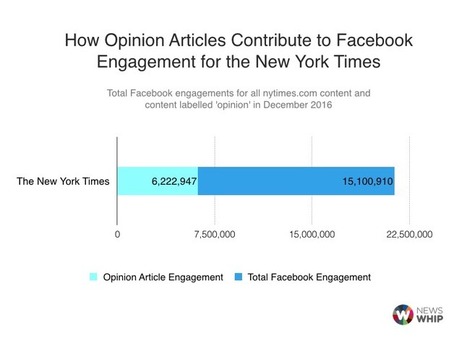








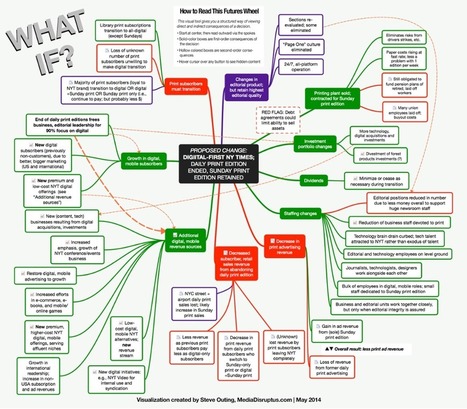
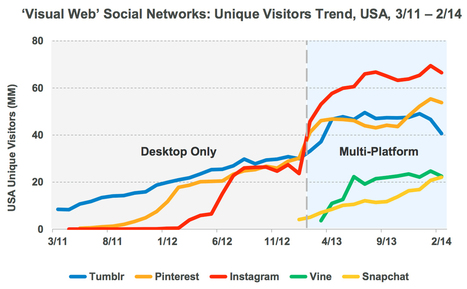





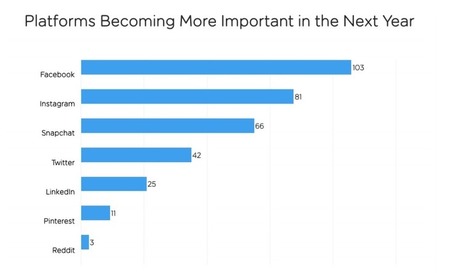




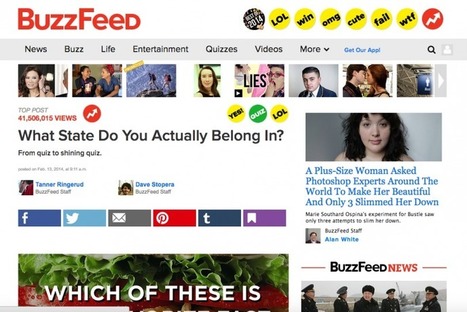



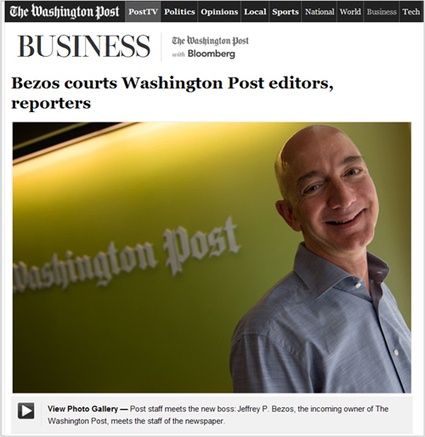


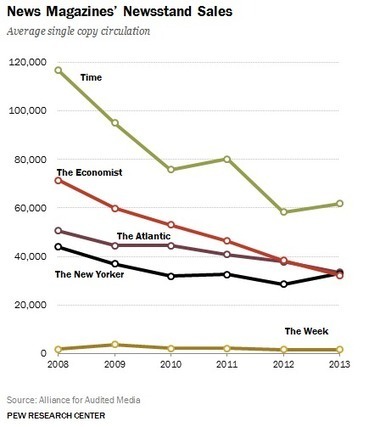





How social media drives mainstream media reader engagement.